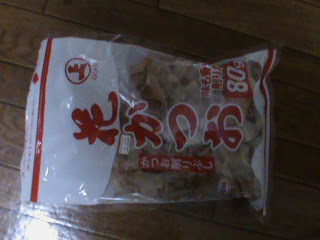




Japan winters are not half as dry as Nebraska winters, but they're dry enough. A few weeks ago, the dry weather spurred me into shopping for some moisurizer. I shop at a variety of different places in Ozu, but this particular time I went to the everything-you-could-ever-want-is-in-one-building store. They stock a plethora of face and skin care options and I was getting a bit dazed.
You see, shopping in Japan can be a tad confusing. Of course, most product and food labels are printed in Japanese (Kanji, Katakana, or Hiragana). Kanji is way above my head and hiragana is usually as clear as mud. But as it turns out, Katakana is a bit of a hidden language, accessible to English-speaking folks. Katakana is used to spell foreign words, or words that are sometimes referred to as "loan words". For example, if you're looking in the grocery store for chocolate, and you know katakana, you can read a package that says "cho-ko" and know that you are looking at package of "cho-co-la-te". The pronunciation is a bit different to accomodate the syllables of the Japanese alphabet, but cho-ko really sounds quite a lot like "choco"late. There are many other loan words found in the grocery store, such as "mi-ru-ku", "jyu-su", "fu-ru-tsu", "ko-hi", as well as many spices and almost all liquor.
But back to the moisturizer story, I finally selected what I thought would hydrate my skin and get my peeling eyelids through the winter, only to bring it home, apply, and nearly have my skin burned off. For awhile, I continued to use this "moisturizer" because the package said, as plain as day, "mo-i-su-tyu-ra-i-za". But today, I finally surrendered and returned to the store to spend more money in the search for something that would be more moisturizing than moisturizer. When I looked again today, I realized that what I had taken for moisturizer was on the same shelf as all of the "moisturizing face wash". Ah ha! The story has a happy ending, and my eyelids are feeling much refreshed already. I really quite enjoy my shopping adventures. It's fun to shop amoung the unknown and to occassionally go home with a surprise.
Here are some pictures of packages that I had in my house. Can you tell what they are??



















